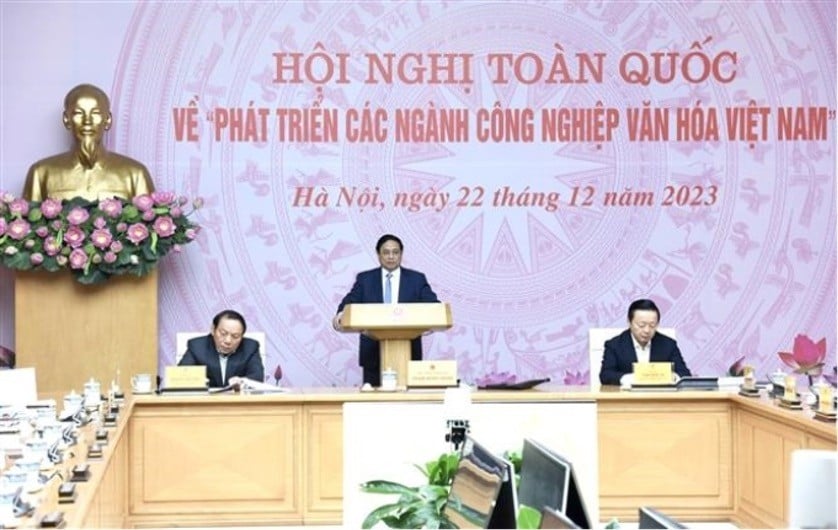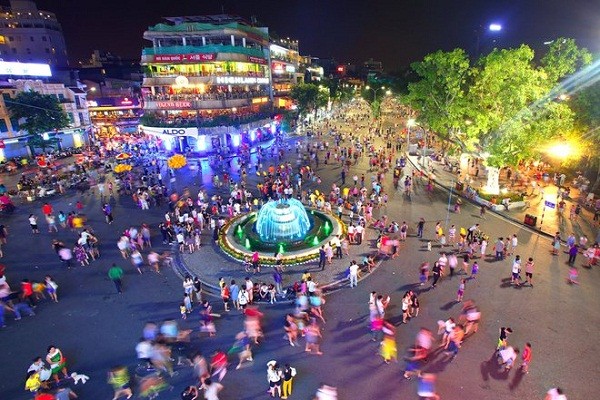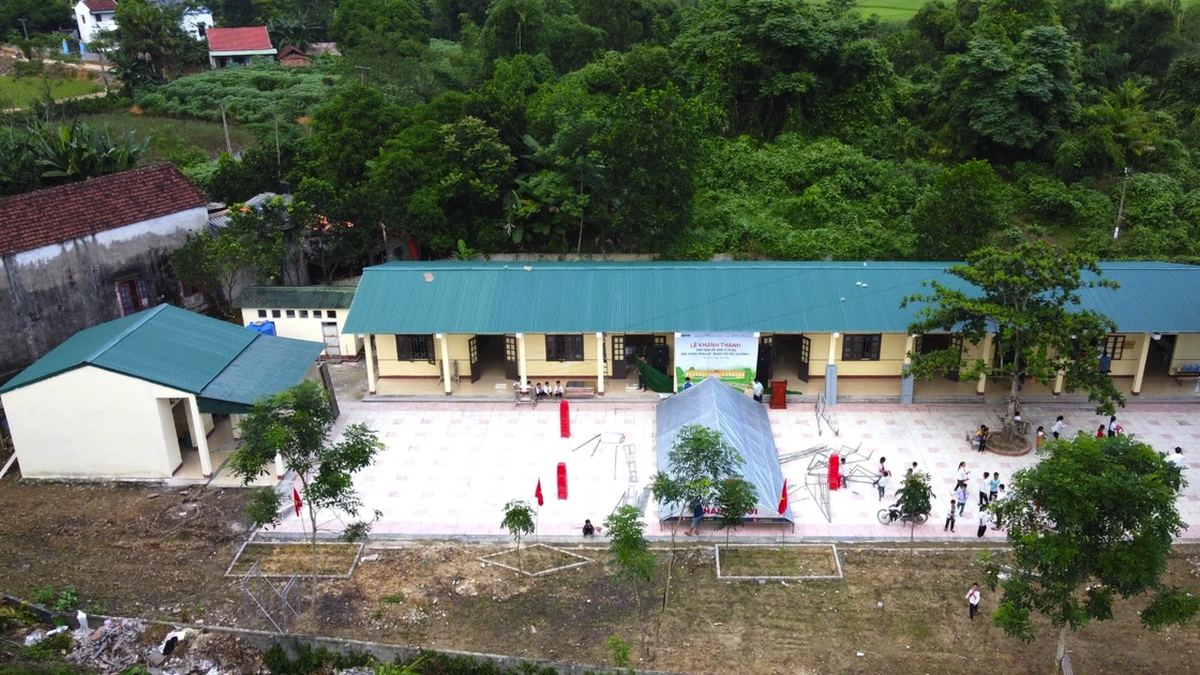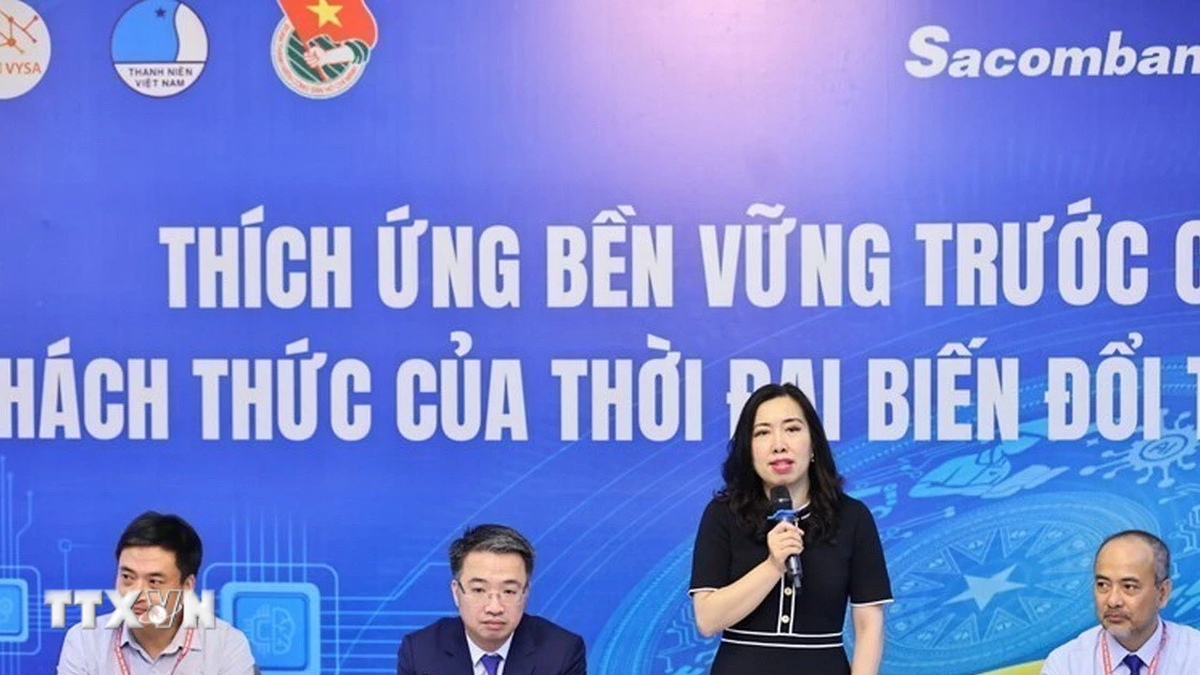The development of cultural industry is taking place strongly in the world, is a “flow”, a trend, and is gradually becoming an important driving force to promote the economic and social development of countries. In which, Vietnam is no exception.
 |
| The Prime Minister chaired the first conference on developing Vietnam's cultural industries on December 22, 2023. (Source: VNA) |
In Vietnam, developing the cultural industry is considered a breakthrough in development, aiming to realize the aspiration of developing a prosperous and happy country; so that culture can truly be the spiritual foundation, illuminating the path for the nation in the cause of innovation.
Development trends
The term “culture industry” first appeared in 1944, in the book Dialectic of Enlightenment by two German researchers, Adorno and Horkneimer.
In 1982, UNESCO stated: “Cultural industries appear when cultural goods and services are produced and reproduced, stored and distributed on industrial and commercial chains, that is, on a large scale, in accordance with economic strategies rather than cultural development”.
In the UK, economist John Howkins initiated the concept of creative economy as a suggestion for using creative potential to create new products and services. This term has initiated new concepts such as creative industries, cultural industries, start-ups.
The cultural industry is currently the "golden goose" of many world economies. In the UK, the cultural industry has generated an income of about 112.5 billion pounds/year, contributing 5% of GDP, accounting for 10-15% of the world's cultural industry market share. In Japan, a country with a large cultural industry; typically publishing stories, making souvenirs from stories and making games from works... the average revenue is up to 2 billion USD.
For Korea, a well-planned development and investment strategy has brought “sweet fruit” to the country’s cultural industry. Cultural export has become a trend called Hallyu - the Korean cultural wave with TV dramas covering Asian countries in the early 2000s... to famous K-pop groups like BTS, BlackPink continuously creating big echoes in the international music market.
Thanks to the right direction, the cultural industry has become a spearhead economic sector of Korea and has risen to 7th place in the world, creating about 680,000 jobs each year. The revenue of the Korean cultural industry reaches about 120 billion USD/year, of which cultural exports account for more than 12 billion USD, surpassing leading manufactured products such as household appliances, electric vehicles and display screens...
In Vietnam, the economic role of culture and cultural industries is increasingly recognized, reflected in many viewpoints and policies of the Party and the State. At the 9th Conference of the Party Central Committee (11th tenure), the cultural industry was officially mentioned in Resolution 33-NQ/TW, dated June 9, 2014 on "Building and developing Vietnamese culture and people to meet the requirements of sustainable national development". The Resolution sets out the goal: "Building a healthy cultural market, promoting the development of cultural industries, and enhancing the promotion of Vietnamese culture".
On June 18, 2016, the Prime Minister's Decision "Approving the Strategy for the Development of Vietnam's Cultural Industries to 2020, with a Vision to 2030" (Decision No. 1755/QD-TTg) affirmed that cultural industries are an important component of the national economy. The State creates favorable conditions to attract maximum resources from businesses and society to develop cultural industries. The Strategy specifies the fields of Vietnam's cultural industries including advertising; architecture; software and entertainment games; handicrafts; design; cinema; publishing; fashion; performing arts; fine arts; photography and exhibitions; television and radio; cultural tourism.
The 13th National Party Congress set out the task: "Urgently and centrally deploying the development of the cultural industry and cultural services on the basis of identifying and promoting the soft power of Vietnamese culture". At the 2021 National Cultural Conference, General Secretary Nguyen Phu Trong outlined 6 major tasks, including: "urgently developing cultural industries, building a healthy cultural market"...
 |
| Quan Ho Bac Ninh folk songs were honored by UNESCO as a representative intangible cultural heritage of humanity. (Source: Tienphong) |
Many potentials and advantages
In Vietnam, the resources for developing cultural industries are very diverse and rich. With a long history of development and the cultural identity of 54 ethnic groups, Vietnam is truly a cultural treasure that not every country has. The 54 ethnic groups living on the S-shaped strip of land have formed unique and rich cultures.
In addition to the values of tangible culture (traditional architectural works of art), Vietnam also possesses countless typical intangible cultural heritages (quan họ, ca trù, hát xoan, cải lương, tuong, chèo...) ... along with a priceless treasure of relics, rituals, festivals, folk games, traditional crafts, folk songs, folk dances, cuisine, customs, legends, heroic images... All can become wonderful materials for creativity, creating cultural and artistic products that both honor national culture and create differences and unique values for cultural and artistic products.
In terms of human resources, Vietnam is in the "golden population" period, with a rapidly growing middle class. Vietnam's average population in 2023 will reach 100.3 million people. This is an important resource - a favorable condition for the development of cultural industries both as producers and consumers of products and services of the cultural industry. In addition to intellectuals and artists, Vietnam also has a team of folk artisans in the fields of music, painting, traditional crafts... They are the "living treasures" of the country in preserving and promoting cultural heritage, developing cultural industries such as tourism, handicrafts, music...
In recent years, especially since the Strategy for the Development of Vietnam's Cultural Industries to 2020, with a Vision to 2030, was approved on September 8, 2016, positive changes in policy mechanisms have contributed to promoting Vietnam's cultural industry market to make new strides, contributing positively to the country's GDP (gross domestic product) growth.
According to a report by the Ministry of Culture, Sports and Tourism, after 7 years of implementing the Strategy for the Development of Vietnam's Cultural Industries, 12 cultural industries have achieved certain achievements. In the period from 2018-2022, the production value of Vietnam's cultural industries is estimated to reach 1,059 trillion VND (44 billion USD). Developing cultural industries is becoming a trend and is identified as an important, sustainable part, attracting resources, labor, jobs and promoting competitive advantages.
Regarding the contribution of cultural industries in promoting the image, identity and increasing the attractiveness and persuasiveness of Vietnam's cultural soft power: the appearance of 3 creative cities of Vietnam (Hanoi, Da Lat, Hoi An) on the map of global creative cities is a solid foundation for Vietnam to determine its goal in the next stage of becoming a cultural industry center that attracts and converges creativity in the Southeast Asian region.
In addition, as a responsible member of UNESCO, Vietnam has demonstrated its positive contributions through actions such as: issuing the "Strategy for the development of cultural industries to 2020, vision 2030" (2016); successfully assuming the role of Vice President of the Intergovernmental Committee and Vice President of the UNESCO Convention General Assembly for the term (2011-2015); being elected as a member of the World Heritage Committee for the term 2023-2027 with a very high number of votes...
In particular, Vietnam being honored as the World's Leading Heritage Destination four times at the World Travel Awards (2019, 2020, 2022, 2023) shows the outstanding global values and attractiveness of cultural tourism - one of the 12 cultural industries to the international community.
 |
Hoan Kiem Lake Walking Street - a popular and potential cultural space in Hanoi. (Source: dulichvietnam) |
To develop quickly, sustainably, uniquely and with identity
In order for our country's cultural industry to develop quickly and sustainably, effectively exploiting its potential and strengths, at the National Conference on "Developing Vietnam's cultural industries", Prime Minister Pham Minh Chinh stated that there needs to be a strong transformation from awareness, thinking to action; innovation in thinking, breakthroughs in the way of doing things, building a Vietnamese cultural industry of "Creative - Identity - Uniqueness - Professionalism - Competitiveness", on the cultural foundation of "National - Scientific - Popular" of the 1943 Vietnamese Cultural Outline.
Regarding key tasks and solutions, the Prime Minister emphasized that the general spirit is that all levels, sectors, localities and agencies need to be more determined, make greater efforts, act more resolutely, effectively, and focus more; proactively, closely coordinate, and focus on implementing tasks and solutions to strongly develop cultural industries, encourage all explorations, respect creative freedom; focus on industries with great potential and advantages (such as cinema, performing arts, cultural tourism, handicrafts, design, software and entertainment games), so that by 2030 the added value of cultural industries can increase.
Representing the Ministry of Culture, Sports and Tourism, Minister Nguyen Van Hung proposed a number of solutions to promote the development of cultural industries. Accordingly, it is necessary to first raise awareness of all levels, sectors, localities and the whole society about the role and position of cultural industries in socio-economic development. Along with that, it is necessary to continue researching and perfecting the legal framework to create a legal basis, "unlocking" resources to promote the development of cultural industries in the period of international integration, such as: preferential policies on capital, encouraging creativity for artists, start-ups, etc.
Minister Nguyen Van Hung stated that the development of cultural industry and cultural services is based on the effective application of new values and achievements of culture, science, engineering and technology of the world through exchange, cooperation, joint ventures and associations with countries with developed cultural industries such as Korea, Japan, China, etc.;
In addition, focus on building a network of creative, branded businesses that are competitive in areas where Vietnam has potential and strengths such as software, handicrafts, performing arts, etc. to create many high-quality cultural products to participate in the domestic and international cultural markets.
At the same time, focus on training human resources to develop cultural industries through schools, through links with businesses, and cooperation programs with international partners. In addition, add statistical indicators on cultural industries to the national statistical indicator system, so that on the basis of this data, there are appropriate investment policies and development roadmaps for the entire cultural industry in general and each cultural industry in particular.
For the cultural industry to achieve the expected "creativity - identity - uniqueness - professionalism - competitiveness" is not a simple thing that can be done in a day or two. According to cultural experts, with the shortcomings in the development of the cultural industry, it shows that the road ahead is still full of hardships, we need to have solutions and a roadmap to remove appropriate shortcomings, especially in mechanisms and policies; synchronously deploy solutions on planning, market, science and technology, mobilize the participation of enterprises and banks, attract public-private partnership resources, focus on products and services to create efficiency and spread, develop national brands...
Along with the continuous development of science and technology, especially the 4.0 industrial revolution, the cultural industry is based on the basic and most important material of creativity. Therefore, the development trend of products and services in Vietnam's cultural industries must meet the creative factors, have their own identity, be unique, and meet the competitiveness in the domestic and international markets...
The joint efforts and unanimity of the Government, ministries, sectors and localities will certainly help the cultural industry become a new breakthrough field for the country's sustainable development.
Source

































































































Comment (0)